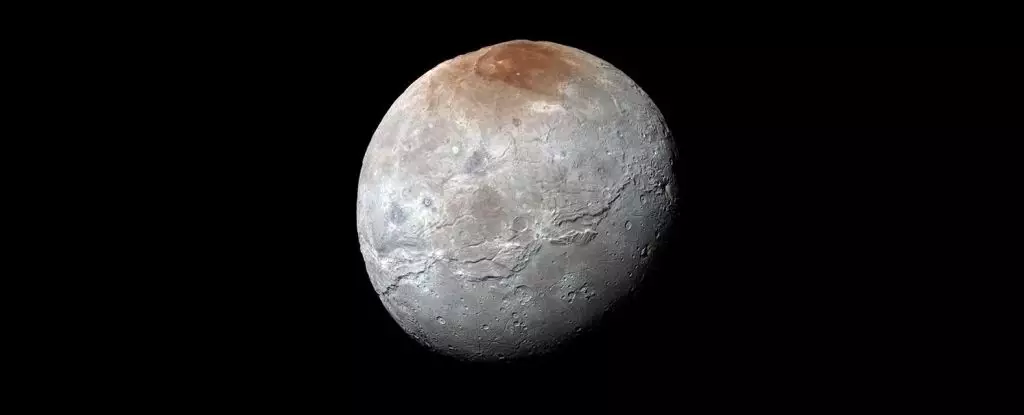The enchanting relationship between Pluto, the dwarf planet, and its moon Charon has captivated scientists for years. New research presents a strikingly different narrative of their origin, suggesting a collision-based formation that stands apart from conventional theories. Instead of merely colliding and merging—a scenario common in celestial mechanics—scientists propose a “kiss and capture” model that emphasizes a more intricate rendezvous in the ancient solar system.
The term “kiss and capture” suggests that Pluto and Charon did not simply collide and combine into one entity or bounce off each other painfully in a traditional “hit and run” style commonly observed in planetary formation. Rather, researchers from the University of Arizona theorize that the two bodies engaged in a brief period of being conjoined before settling into their current stable orbit. This means they were gravitationally bound for a significant amount of time, reinforcing the notion that their relationship is not just a cold planetary dance but a complex historical interaction.
In traditional models, the formation of Charon was often likened to the giant impact scenario thought to have created Earth’s Moon. The mechanics behind such models largely depend on size, velocity, and the type of materials involved. In this case, Earth and the Moon are primarily composed of warmer, more fluid materials, which allow them to behave as softer objects during collisions. This results in a destruction-and-rebuild cycle that potentially forms moons from debris. Pluto and Charon, however, challenge these norms as they are smaller and significantly colder, consisting of rock and ice.
Pluto measures approximately 2,376 kilometers in diameter while Charon is about 1,214 kilometers across, separated by a consistent distance of around 19,500 kilometers. The stable and circular orbit around their mutual center of mass suggests an intimate connection, a lingering echo of their earlier cosmic embrace. This alignment provides clues that they likely evolved from a common physical event, reinforcing the notion that they emerged from a shared rotational disruption.
However, what sets Pluto and Charon apart from the Earth-Moon model is their chemical makeup and environmental conditions. As colder bodies, the interaction of nearby ice and rock would not result in catastrophic destruction but rather a momentary unification. During their initial encounter, the forces at play would allow them to remain relatively intact, thus avoiding the extensive debris dispersal that characterizes other formation theories. This idea of maintaining their individuality lends credence to the contact binary structure—the two bodies co-existing, yet distinct.
Simulations Affirming the New Model
Researchers utilized advanced simulations to explore this novel scenario. What emerged was a captivating narrative that not only accounted for how Pluto and Charon could form but also aligned with their current orbital characteristics. The findings are significant: the simulations validated the “kiss and capture” theory by perfectly replicating the current state of both bodies. Erik Asphaug, a planetary scientist involved in the study, highlighted the dual accomplishment of the model in accurately positioning Charon in its orbit while elucidating the nature of their formation.
This innovative perspective enriches our understanding of planetary evolution. It underscores the necessity of accounting for the varied physical properties of celestial bodies when developing formation theories. Ignoring these nuances may lead to misconceptions about how different planetary systems evolve and interact over time.
This research opens new avenues for understanding not only Pluto and Charon but also other binary systems across the universe. The findings encourage a reevaluation of existing models concerning planetary formation and suggest that gravitational interactions may be more complex and diverse than originally believed. Furthermore, as we delve deeper into the origins of these celestial bodies, the implications extend beyond just Pluto and Charon; they determine how we interpret the evolution of countless other planetary bodies in the universe.
Denton emphasized the study’s focus on determining how their initial configurations may influence Pluto’s geological evolution over the eons. This newfound understanding could alter perceptions of how environment and composition shape planetary life cycles, both in our solar system and beyond.
As we contemplate this cosmic romance, the tale of Pluto and Charon reflects not merely their origins but also the intricacies of the cosmos, emphasizing that each celestial body holds its unique story within the vast narrative of our universe.

